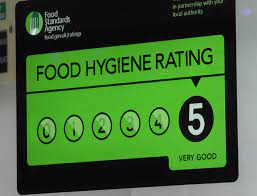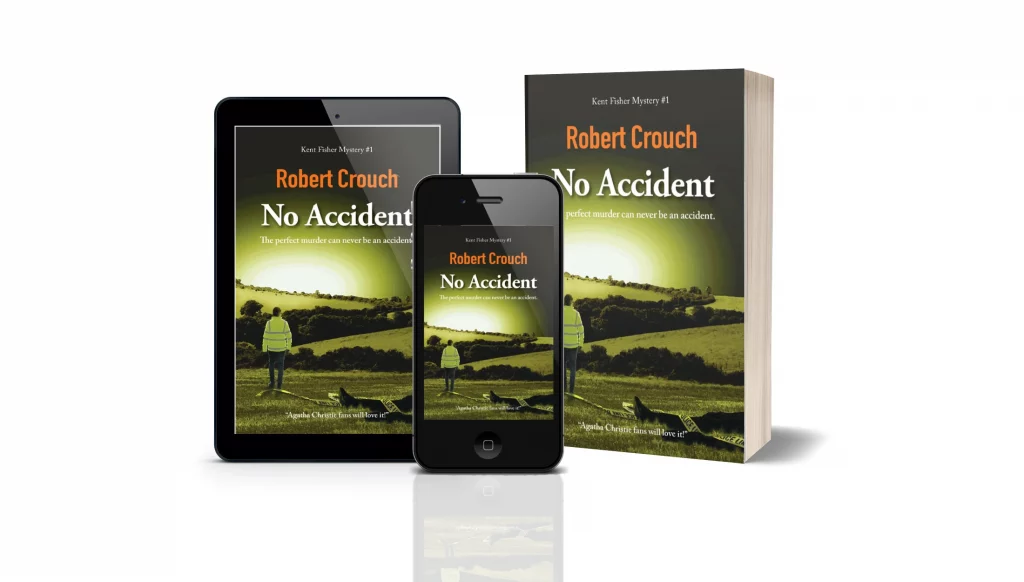
An environmental health officer solving murders?
‘Kent Fisher is a wonderful creation and unique in crime literature.‘ Susan Corcoran, wrote this on 14th April 2018 when she reviewed No Bodies, the second Kent Fisher murder mystery.
While I’d never considered him like this, I hope he joins a long list of amateur sleuths who’ve graced literature and TV screens.
A quick glance at crime fiction novels reveals sleuths who are village gossips, ecologists, forensic archaeologists, taxi drivers, obituary writers, magicians, or retired people in a care home. TV crime has had local radio presenters, pensioners and gardeners solving murders.
But let’s take a reality check for a moment.
You wouldn’t pop into your local town hall or council offices and ask to see an environmental health officer (EHO) about a murder. These people deal with food safety and hygiene, health and safety in the workplace, noise, pollution and a whole host of other areas that affect your local environment.
Yet people die from food poisoning and infectious diseases. People can die because of poor housing conditions. People can be driven to violence and even kill noisy neighbours. Each year, far too many people die as a result of work accidents.
Now imagine you’re a killer. What if you disguised a murder as food poisoning? Inject a healthy dose of botulism in the bride’s prawn cocktail at a wedding reception dinner and think of the plot possibilities.
(I must make a note of this for a potential Kent Fisher mystery in the future.)
Or you disguise murder as a work accident.
Someone could fall to their death from some scaffolding. They could be crushed under an overturned quad bike on a farm. They could drown in a swimming pool at a hotel or leisure centre.
Or they become entangled in some machinery at an adventure park. The millionaire playboy owner wangled planning permission despite local opposition and protests. EHO, Kent Fisher, was among the most vocal and active protestors.

The basics for No Accident, the first Kent Fisher murder mystery grew from these ideas. I was between food hygiene inspections, driving through my South Downs district, thinking how easy it would be to hide a body among the green rolling hills.
Though excited by the idea, this was only the start of my troubles – and Kent’s, as it turned out.
It’s time for another reality check.
Imagine you had a full time job. If you wanted to do some sleuthing, you’d be limited to evenings, weekends and days off. If you’re lucky, the killer would choose the day before a bank holiday weekend, giving you three days to solve the case.
You could use your lunch hour. A lot of investigating involves searching Google and social media. If you’re an EHO, you have access to all kinds of records. You know people who work for the police, social services, fire and rescue.
And if you need to check out a place that’s close to a restaurant or café that’s due a food safety inspection …
What happens if you’re discovered, moonlighting in work’s time? Or nosing round an empty building?
I can recall times when I waiting to meet someone who was late. I was sitting in my parked car, listening to music when a tap on the window disturbed me. The police officer wanted to know what I was doing there, probably wondering if I was a burglar, sizing up the houses.
Okay, this is fiction and you can stretch reality a little, but I owe it to my readers to be accurate and credible. After all, an EHO isn’t an obvious sleuth, right?
Wrong.
While I always tried to work with people and business to improve standards, EHOs are still law enforcement officers. They have powers of entry that are often equal to and better than those the police work with. EHOs can close down businesses that pose a serious risk to the public. They can seize and destroy anything harmful or dangerous.
They may not investigate rape, murder or abduction, but they’re bound by the same rules and procedures as the police. EHOs investigate, gather evidence, interview witnesses and suspects and prosecute offenders in criminal courts.
Having investigated many complex problems and several fatal work accidents, I felt confident my idea would work.

But when I started writing the story, I realised how adept EHOs are at gathering information. They have fantastic networks nationally and locally. They get on well with local businesses and the community in general. People like them and want to help, which made Kent Fisher’s job easier.
It allowed him to investigate without crime scene investigators, DNA profiling and all the officers that make up a murder enquiry team.
And once Kent solved a murder, he established the credibility he needed to solve more.
Of course, none of this helped when his manager and employers realised what he was doing, but neither did they want to be seen disciplining a local hero, who’d solved a murder.
It creates plenty of friction and conflict though, which is what all stories need.


